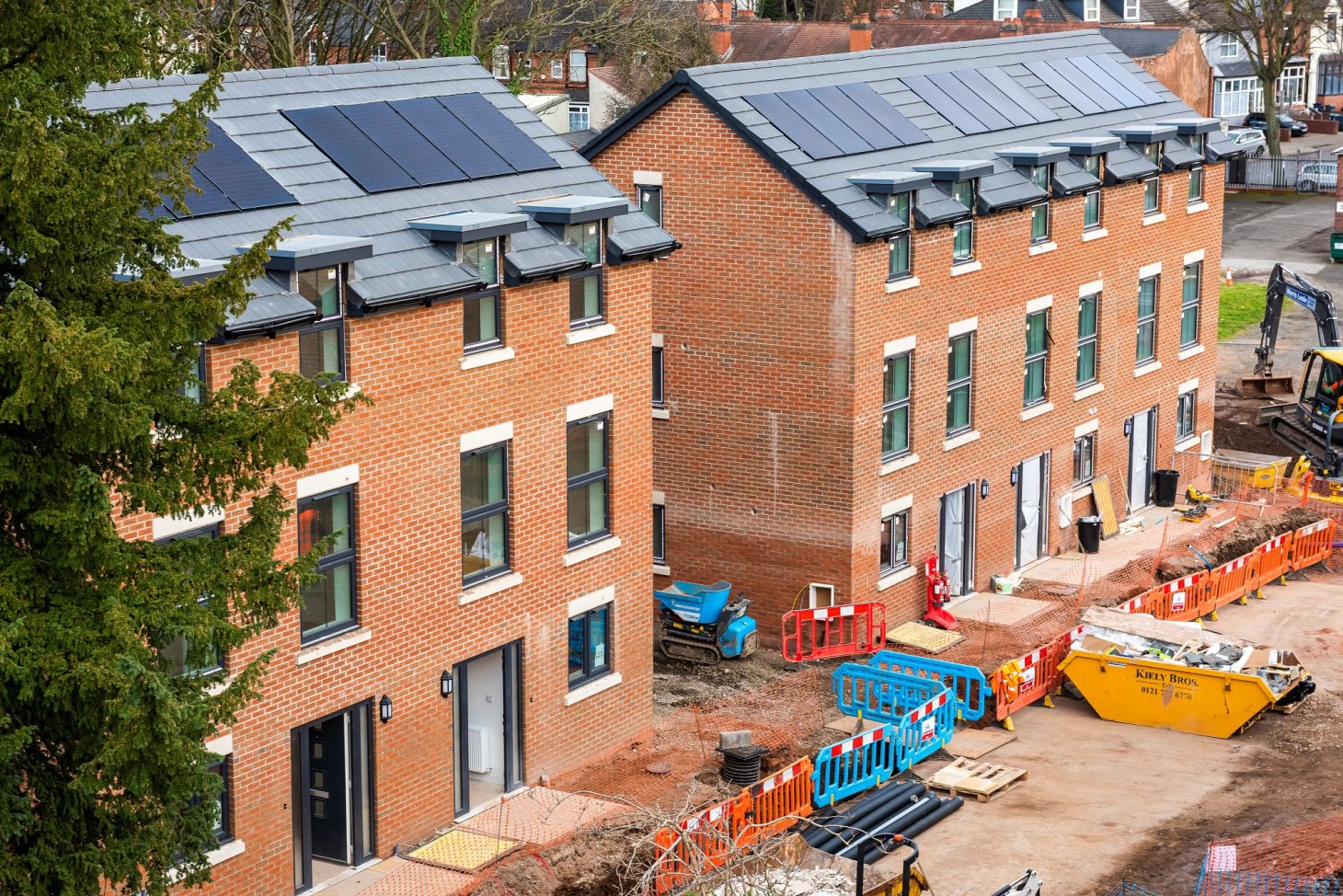
A consultation published in December 2023 sets out the government’s plans for achieving the Future Homes Standard, backed by a commitment to energy efficiency and reducing carbon emissions of new homes.
The consultation has suggested that a fabric first approach will be fundamental to meeting the requirements of the 2025 Future Homes Standard. As set out by the consultation, the suggested u-Value for walls remains at 0.18W/m2K, the standard currently required by the Building Regulations. New homes will utilise low-carbon heating and be 'zero-carbon ready,' urging housebuilders to prioritise high-performing fabric materials from the start.
This methodology prioritises minimising heat loss by ensuring the building envelope meets the highest standards, resulting in low carbon, sustainable homes that are affordable for residents to heat.
Project 80
Project 80, a pioneering development by Midlands Heart Housing Association, showcases homes built to the Future Homes Standard using aircrete. These homes, monitored and evaluated for performance, demonstrated a 70% carbon reduction when combining heat pumps and PV panels in masonry structures.
Valuable insights from Project 80 suggest strategies for achieving an 80-90% carbon emissions reduction, including increased insulation, enhanced window specifications, improved airtightness, and educating occupants on effective heating and ventilation.
H+H, having always maintained a fabric first approach to energy efficiency, was happy to participate in Project 80. H+H aircrete blocks contribute to the construction of energy-efficient, airtight buildings that can enhance the performance of energy-saving technologies such as underfloor heating and air source heat pumps, the latter of which were used in the majority of the first 12 of Project 80’s homes.
H+H fabric first projects
Committed to advancing fabric performance standards, H+H has collaborated on various projects including the Cameron Close Passivhaus development on the Isle of Wight and the Norton Farm development for Bromsgrove District Housing Trust. For the Cameron Close development, H+H worked with the scheme’s developer on the application of Thin-Joint blockwork. In this instance, H+H's 200mm thick Celcon Plus blocks have been used to construct Thin-Joint aircrete, load-bearing walls. Apart from accelerating the construction process, the Thin-Joints play a role in enhancing the residences' airtightness, thereby improving their overall energy efficiency.
At the Norton Farm development, H+H’s Vertical Wall Panels have been used to speed the construction of the building’s energy efficient fabric. Here H+H's Vertical Wall Panels, storey-high panels of aircrete, have been used to construct the insulated, airtight building envelope of 164 units.
As the 2025 Future Homes Standard approaches, the focus on fabric-first construction, supported by materials like aircrete, sets the stage for sustainable and low-carbon housing.